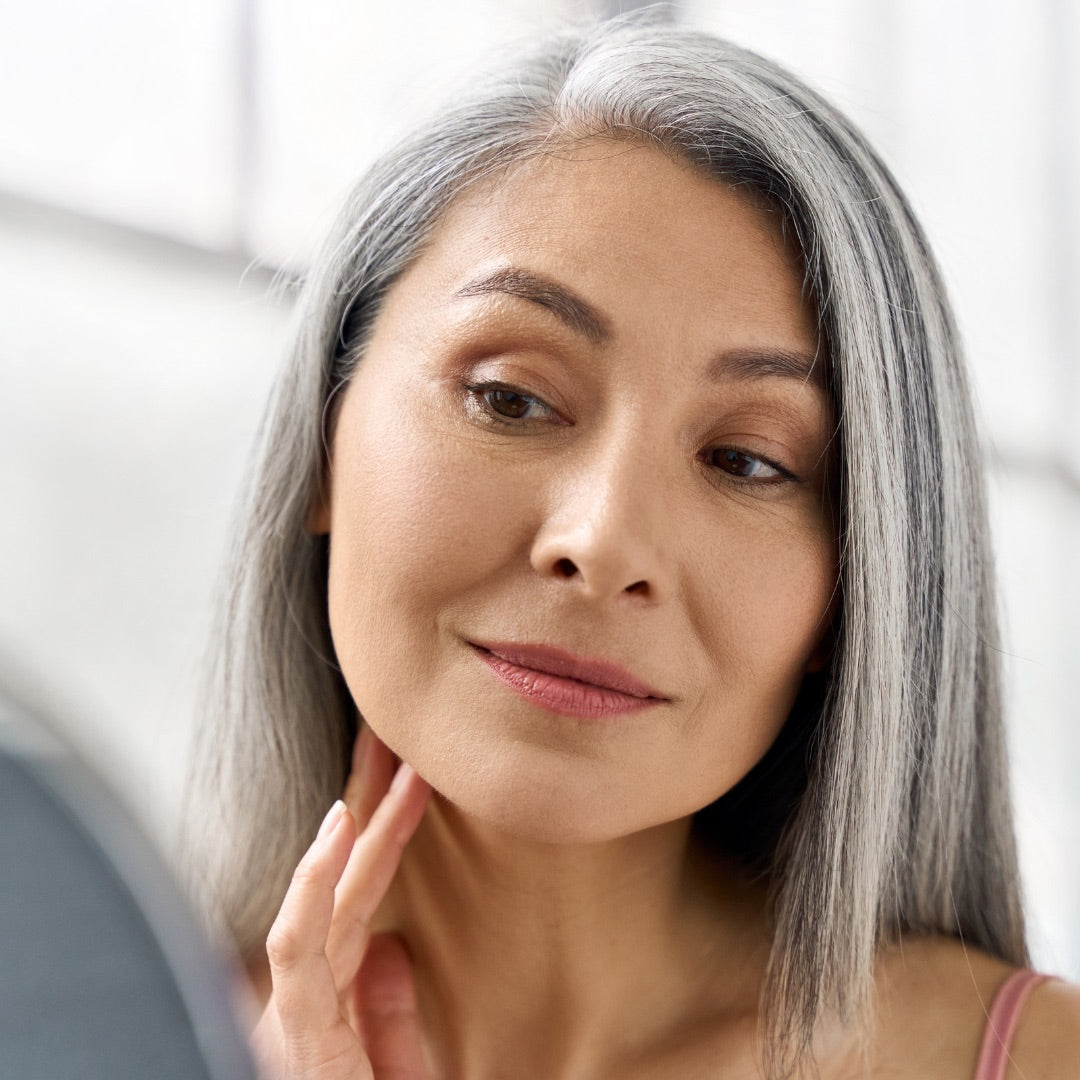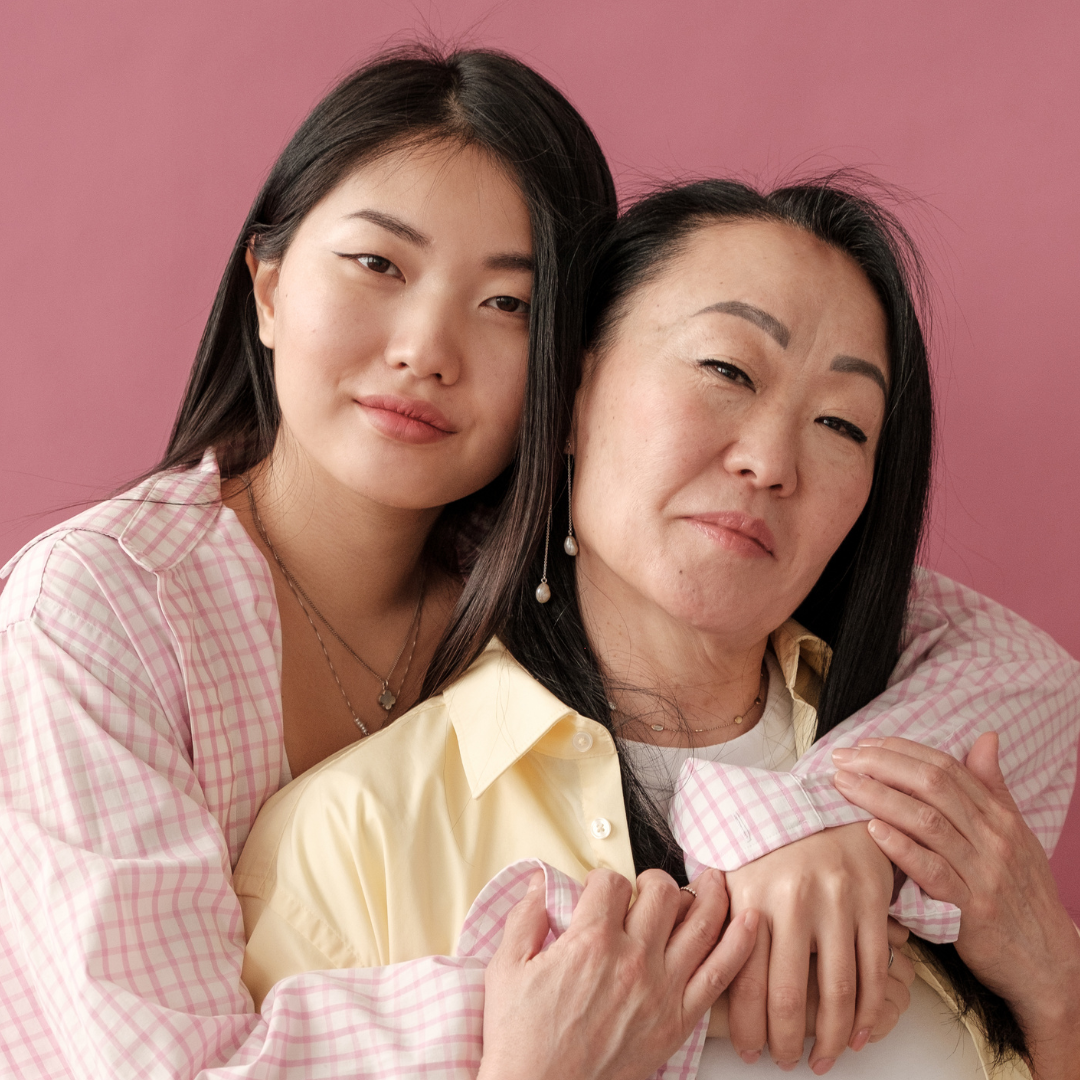Most of us have probably heard phrases like “aging is natural” or that we should “age gracefully.” Whether it’s in the skincare space online or from friends, there are a lot of opinions to be found on the topic of aging - especially for women. One person will tell you that aging is inevitable and needs to be accepted while the next may recommend aggressively targeting the signs of aging with a medical provider.
This isn’t a blog post telling how to approach aging. At the end of the day, the answer will change depending on who you ask and the only right answer is the one that works for you. But here on the blog we talk about all things skin and we do want to challenge this idea that all aging is always natural. Because when it comes to skin aging, that isn’t always the case.
Not All Aging is the Same

When it comes to aging, especially in regards to skin, there are two types.
One is called intrinsic aging - or what you may think of as chronological aging. This type of aging is inevitable and natural. It occurs even in areas not exposed to the sun, like the under arms, and is often characterized by thinning skin and fine wrinkles.
Then we have extrinsic aging. It’s often referred to as photoaging due to the environmental factors that cause it, the main one being the skin. You may also have heard it referred to as premature aging. It occurs more in sun exposed areas and involves coarse wrinkles and a rough appearance to the skin.
Intrinsic Skin Aging:
- an inevitable, physiological process
- also called chronological aging
- occurs in all areas, even skin not exposed to the sun
- characterized by fine wrinkles, thinning dry skin, and gradual dermal atrophy
Extrinsic Skin Aging
- premature aging of the skin due to environmental factors like sun, pollution, smoking, and poor nutrition
- also referred to as premature aging or photoaging
- occurs more in areas exposed to the sun
- characterized by coarse wrinkles, epidermis thickening, loss of skin elasticity, and rough appearance to the skin
This means that ultimately, not all aging is inevitable and natural. And skin, as our outermost organ, is unique in that much of its aging is due to those environmental factors. This means that much of skin aging is preventable. And that is what interventions like sunscreen and NEWA radio frequency address.
How Does the Sun Impact Our Skin?

The skin barrier is made up of many layers of protections. It has its own defenses against the sun and oxidative stress, especially skin with more melanin. However, these protections are quickly exhausted when you increase the time exposed and the amount of UV radiation present.
The sun can actually burn the skin - this type of radiation burn is called a sunburn. While both UVA and UVB rays are involved, it’s UVB radiation that triggers the formation of dimers that then generate a DNA repair response. This is what triggers cell apoptosis (cell death) and the release of inflammatory mediators and reactive oxygen species, causing the erythema (redness) and pain associated with a sunburn. Source
Even if you don’t burn though, oxidative stress is still occurring and skin darkening is another sign of damage. While it’s estimated that the sun contributes 80-90% of extrinsic skin aging, other environmental factors like smoking also contribute.
Over time, exposure to the sun changes the structure and function of the skin. The skin can’t repair itself as well and desquamation (shedding of dead skin cells) is impaired as the skin cells at the skin surface lose their regular shape. The epidermis of the skin becomes thickened while the collagen in the dermis is degraded. Uneven pigmentation, coarse wrinkles, and roughness develops.
Preventing Premature Aging

Luckily, much of photoaging is preventable. There is a wealth of knowledge on how to prevent further aging from environmental factors and address existing UV damage too. So let’s discuss some of the most effective options.
Sunscreen. Because the sun is the primary driver in extrinsic skin aging, a great sunscreen is a must. You want something that protects against both UVB and UVA rays so look for a SPF 50+ broad spectrum sunscreen at minimum. If you are active outside or around water, you’ll want something water resistant. And most importantly, make sure it’s something you’ll use.
Vitamin C and other antioxidants. Antioxidants can offer added photoprotection when used with sunscreen - and no sun protection is 100%. They also help protect against oxidative stress from environmental factors aside from the sun and sunscreen only help with UV radiation. Vitamin C is well studied and can help address UV damage so that is a good one to look for alongside other antioxidants.
Retinoids. Often called the “gold standard” for skin aging, retinoids like tretinoin have a large body of research behind them. They can both help prevent and address photoaging on top of a myriad of other skin benefits - and can help with the deeper skin layer too. Just remember, they’re not a substitute for sunscreen.
NEWA Radio Frequency. If you have significant sun damage, you may have significant collagen and elastin loss that skincare can’t address. Topical skin care is going to work best when used preventively. NEWA radio frequency devices are clinically proven to increase collagen and elastin in the skin.
What to Remember
It’s up to you to decide how you approach the topic of aging. Only you can decide what feels right to you. Regardless of what you decide, we hope this article provides some insight on skin aging and that protecting our skin and addressing premature aging is not at odds with embracing natural aging
With a trend toward more UV radiation reaching the planet now vs historically, we want to protect our skin where we can. It’s not just for cosmetic reasons either, but for the health of our skin. Which is why we want to finish this blog by reminding you to please see your dermatologist if you have any suspicious moles. Because the number one risk of sun exposure is skin cancer.
Want to keep up with us or have a topic for a future blog? Message us on Instagram or join the NEWA Beauty Facebook Community. This blog is not intended to diagnose or treatment nor should it be used instead of seeking medical advice.




